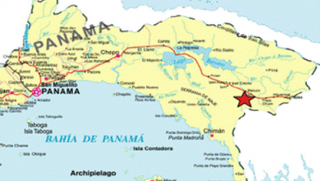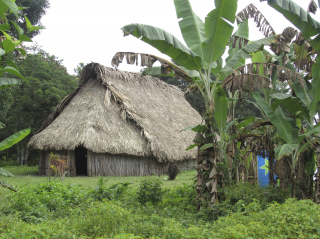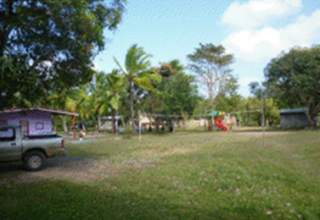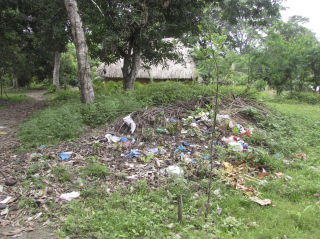Guacuco Guna, Panama
![]()
![]()
![]()
![]()
![]()
![]()
![]() Click on Programs to learn more about their work in this community
Click on Programs to learn more about their work in this community
General Information

| Population* | 165 |
| Number of homes | 30 |
| Number and % of children | 80 < 12 years, 49% |
| Electricity | Yes (in parts) |
| Corregimiento | Torti |
| District | Chepo |
| Corresponding Health Center | Centro de Salud in Torti |
| Distance from compounds | 20 minutes |
* Population does not reflect how many patients will be seen on medical
brigades as many people from surrounding communities come seeking
Medical Brigades medical attention.
Top Needs Expressed
The top needs expressed by the key community members are water and health infrastructure, home infrastructure and access to education.
| Guacuo Kuna is an indigenous community that is a part of the Congreso General de la Cultura y el Congreso General, which are the maximum authorities. The Congreso serves as the local governing body of the Kuna communities. Traditionally, both Congresos have three Sailas (leaders). Guacuco Kuna has two Sailas, Jaime Valdez, who is also the President of the Savings and Loan Cooperative and the church pastor and Miguelito, the cultural chief. Guacuco Kuna is inside the Indigenous Comarca, which is an area that politically separated from Panama and governed by the indigenous law where the maximum authority is the indigenous congress. Guacuco Kuna has a Water Committee, an Agriculture Cooperative, a Savings and Loan Cooperative, a women’s group and various church groups. |  |

| Guacuco does not have a school; however, Wacuco (the latino part of the community) does have a Primary school (until 6th grade), which is 20 minutes walking distance from Guacuco. The school does not offer class in the Kuna dialect, Tule, nor do they have Tule language classes. About 32 children from the community attend the school. Approximately, 90% of the community knows how to read and write. For further education, the students are able to take public transportation to Torti. |
Guacuco Kuna and Wacuco Colono share a water system, which is a gravity-based aqueduct built in 1997. The system is being repaired this year by the Ministry of Health. On average, the community has water 3-4 days a week in the summer and 6-7 days a week in the winter. Approximately 25 of the houses are connected to the water system and each house pays $2 a month for the service. The water is not chlorinated and families do not treat or filter the water in their homes. The community leaders believe that the source of the water is in danger of becoming contaminated by the cattle. The president of the Water Committee is Manuel Perez and there are seven members that meet at least once a month.
Guacuco Kuna does not have a Puesto de Salud, however, the closest Centro de Salud is in Torti, which is 15 minutes away by bus and an hour walking. The most common illnesses seen by community members are intestinal parasites, diarrhea, common cold and skin infections. There are two flush toilets in the community, previously built by the church, that are shared by everyone. Families that do not use these toilets go outside or to the river. Approximately, 90% of the community has gas stoves and they also use firewood when they run out of gas or money. Approximately, 80% of the houses have dirt floors, which is a custom for Kuna communities. The majority of the houses are completely made of dried cane, sticks and leaves, which is Kuna tradition.
The average family income per month is estimated to be $75-150 a month. The main form of employment is agriculture, and the main products that are cultivated in the community are corn, rice, yucca, plantains, and coffee. The community also sells artisan goods. In addition, the community members work as day laborers for bigger companies in the region. There is one kiosk in the community selling dry goods and one small restaurant. Members of Guacuco Kuna do not have access to loans from the Savings and Loan Torti Cooperative because they do not have land titles, however, a Savings and Loan Cooperative was created by the community in 2007 to offer small personal loans.
| The central method of waste management is burning and burying trash or throwing it in the river. The community has not participated in any reforestation projects. The Ministry of Development held 2-3 capacity building workshops about best practices for agriculture with the community. Another organization called Promesa also talked about sustainable agricultural practices with the community. The majority of the community does not use any chemicals or fertilizers on their crops. |  |
The Kuna communities have access to an indigenous lawyer who lives outside of the community. Most community members in Guacuco Kuna do not seek out legal support as lawyers are too expensive to afford. The community members do not have land titles because they live on collective land. Common legal conflicts that occur in the community are related to land and family.
Other government organizations and NGOs are known to work in the community; however, the scope of these projects is unknown.
Global Brigades met with community leaders and interested members in November 2011 and current runs regular Medical Brigades every 4-6 months. Business Brigades will start working in Guacuco Kuna in March 2012 and the community will be the third community in which Global Brigades will begin implementing the holistic model.
Source of information: Key informant interview
Date of interview: January 26th, 2016